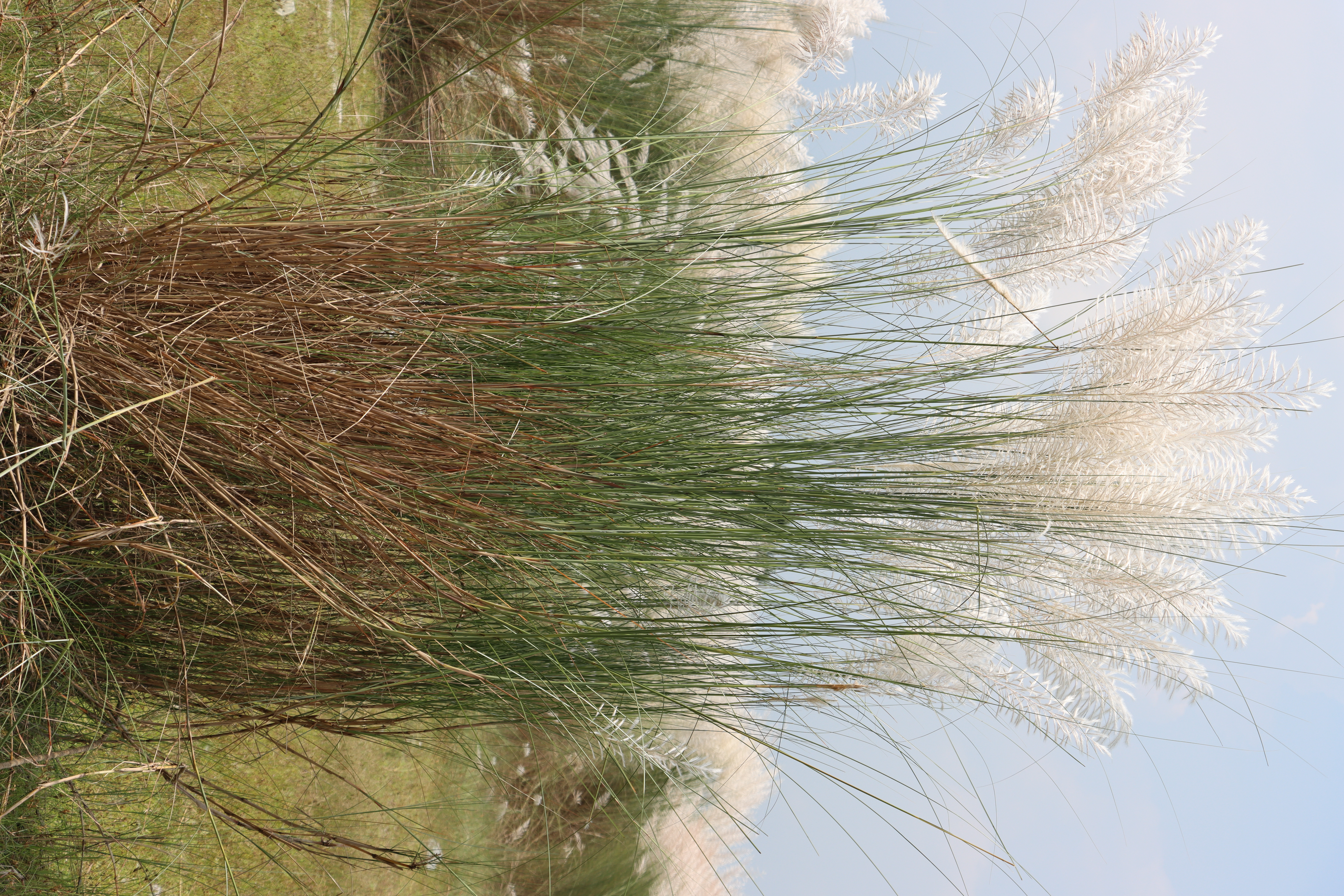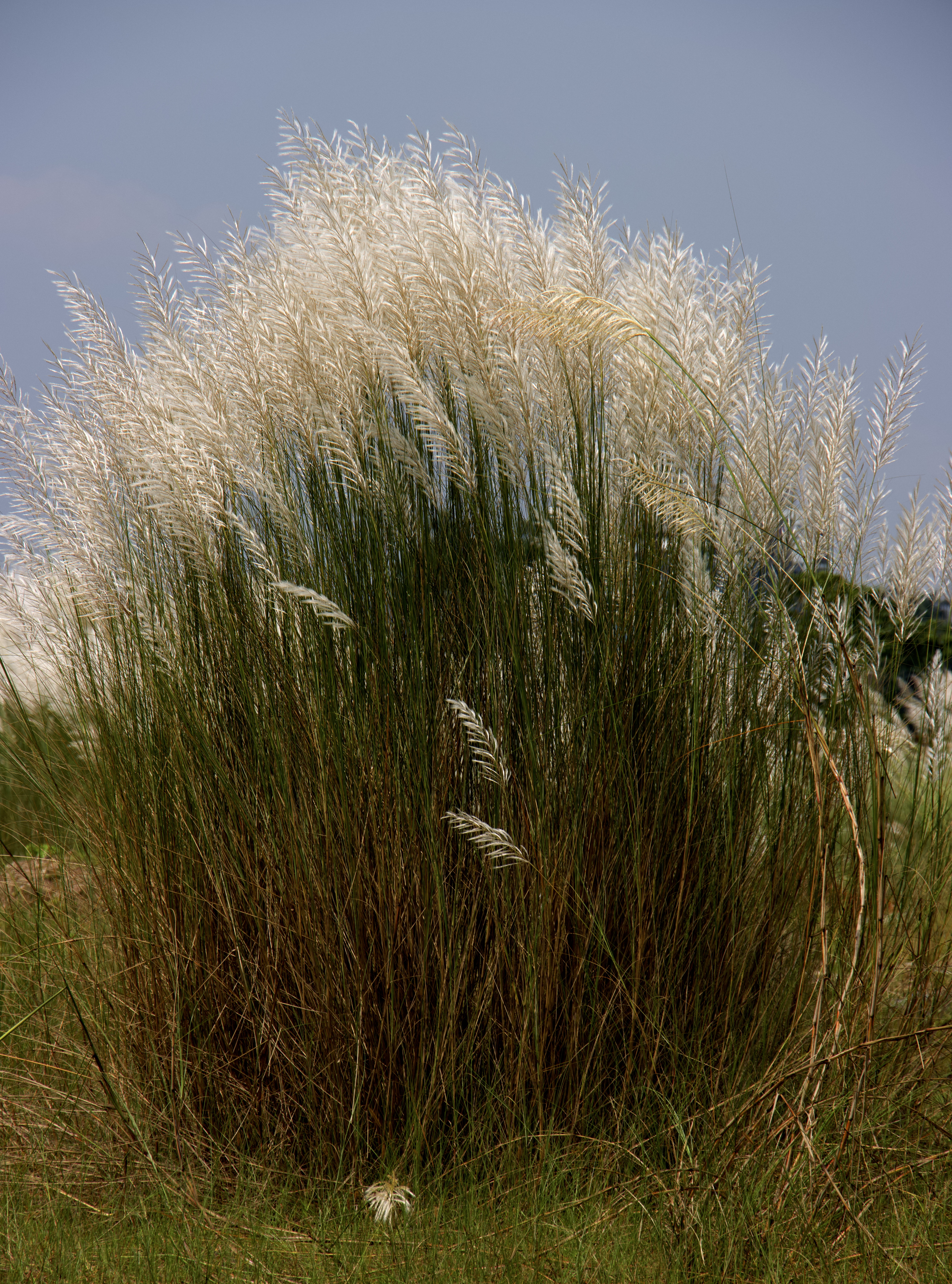

Identification Notes





EPPO CodeSACSP |
Life CyclePerennial |
MorphologySaccharum spontaneum is a tall (100–600 cm) perennial grass with a creeping, tufted and rhizomatous rootstock. Stem- solid above, fistular below (=Culm), serect, polished, robust; internodes solid; node 5–10, waxy. Leaves- linear-lanceolate, involute, with long hairs at base, base rounded; ligule 2–8 mm long, ovate, brown, membranous, ciliolate; leafblade 45 × 0.2–200 × 1.5 cm, glabrous, apex accuminate, base simple or tapering to the white midrib, scabrid to serrate along margins; sheath longer than internode. Inflorescence- plumose panicles; peduncle hirsute above; panicle 15–60 cm long, silky white, axis silky pilose or hirsute, open, ovate, dense; racemes 3–17 cm long; rachis internodes filiform; spikelets homomorphic, lanceolate, reddish-brown, paired (one sessile and the other pedicelled), pilose with long silky hairs, awnless. Fertile spikelets sessile, lanceolate, dorsally compressed, two in the cluster, subequal; pedicels filiform, ciliate. Glumes similar, membranous above, chartaceous below; lower glume 3–4 × 1 mm, ovate-lanceolate to elliptic, subcoriaceous to coriaceous, acuminate at apex, ciliate along margins, much thinner above, 2-keeled; upper glume 3–4 × 1 mm, ovate-lanceolate, coriaceous, acute at apex, ciliate along margins, mucronate, much thinner above, without keels. Florets basal sterile and upper fertile; sterile florets barren, without significant palea; lemma 1–2 × 1 mm, lanceolate, hyaline, 0-veined, without midvein, without lateral veins, acute at apex; fertile floret bisexual, first lemma 1–2 × 1 mm,linear, hyaline; second lemma 2–2.5 mm long, linear-lanceolate, hyaline; Palea absent or minute. Flower- lodicules, cuneate, ciliate. Stamens three; anthers yellow or reddish. Ovary oblong; stigma white. Flowering and fruiting occurs from June to September. Flowers emerge just before rains and takes 1–2 months to produce seeds. |
Growing seasonJanuary - December |
Germination periodSeptember - November |
Flowering periodJune - September |
PropagationBy seeds as well as vegetatively by creeping rhizomes and stem cuttings |
HabitatMost commonly found on sandy alluvial belts, flood basins of rivers, banks of ponds and freshwater streams, waterlogged lowlands, border-ridges of fields, edges of forests and wasteland in natural habitat. |
Weed potentialS. spontaneum is recognized as a good colonizer of wastelands and marginal lands. |
Control measureThe species can be easily killed by deep plowing which exposes the entire plant, including the underground stems and rhizomes, to dry in the sun. |
Recommended herbicideDalapon, glyphosate, dalapon + teepol in uncultivated lands. Glyphosate at 4.48 kg ai/ha provided 90% control. Fluazifop-butyl applied twice at 3-month intervals at 168 g ai/ha application was effective against S. spontaneum at the rapid tillering stage. Fenoxaprop-ethyl (a post-emergence herbicide) was also found to be effective against this weed. |
DistributionIs native to South Asia (India) . Globally, it is distributed throughout the tropical countries of Asia, Africa, America as well as in tropical Australia. |
Medicinal propertiesHas been advocated in the treatment of gynaecological troubles and respiratoryproblems. Roots are used as galactagogue and diuretic in Indian Ayurveda. Roots are alsoused as astringent, emollient, refrigerant, diuretic, purgative, tonic, aphrodisiac and usefulin treatment of dyspepsia, burning sensation, piles, and sexual weakness. Aerial parts areuseful in burning sensations, blood diseases, biliousness, and haemorrhagic diathesis (Pandey et al. 2015). |
References[1] Pandey, V.C., Bajpai, O., Pandey, D.N. et al. 2015. Saccharum spontaneum: an underutilized tall grass for revegetation and restoration programs. Genet Resour Crop Evol 62, 443–450. https://doi.org/10.1007/s10722-014-0208-0 |